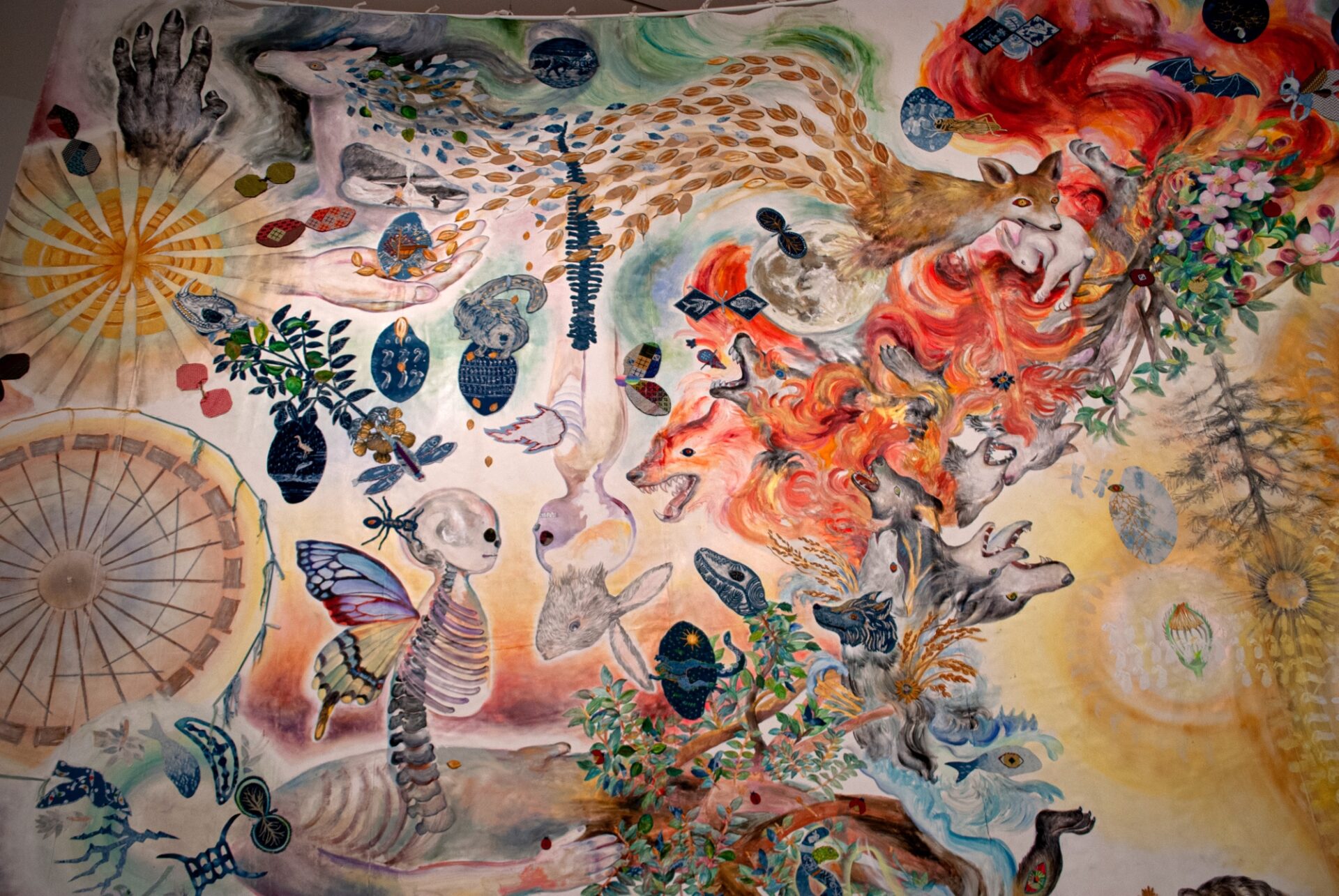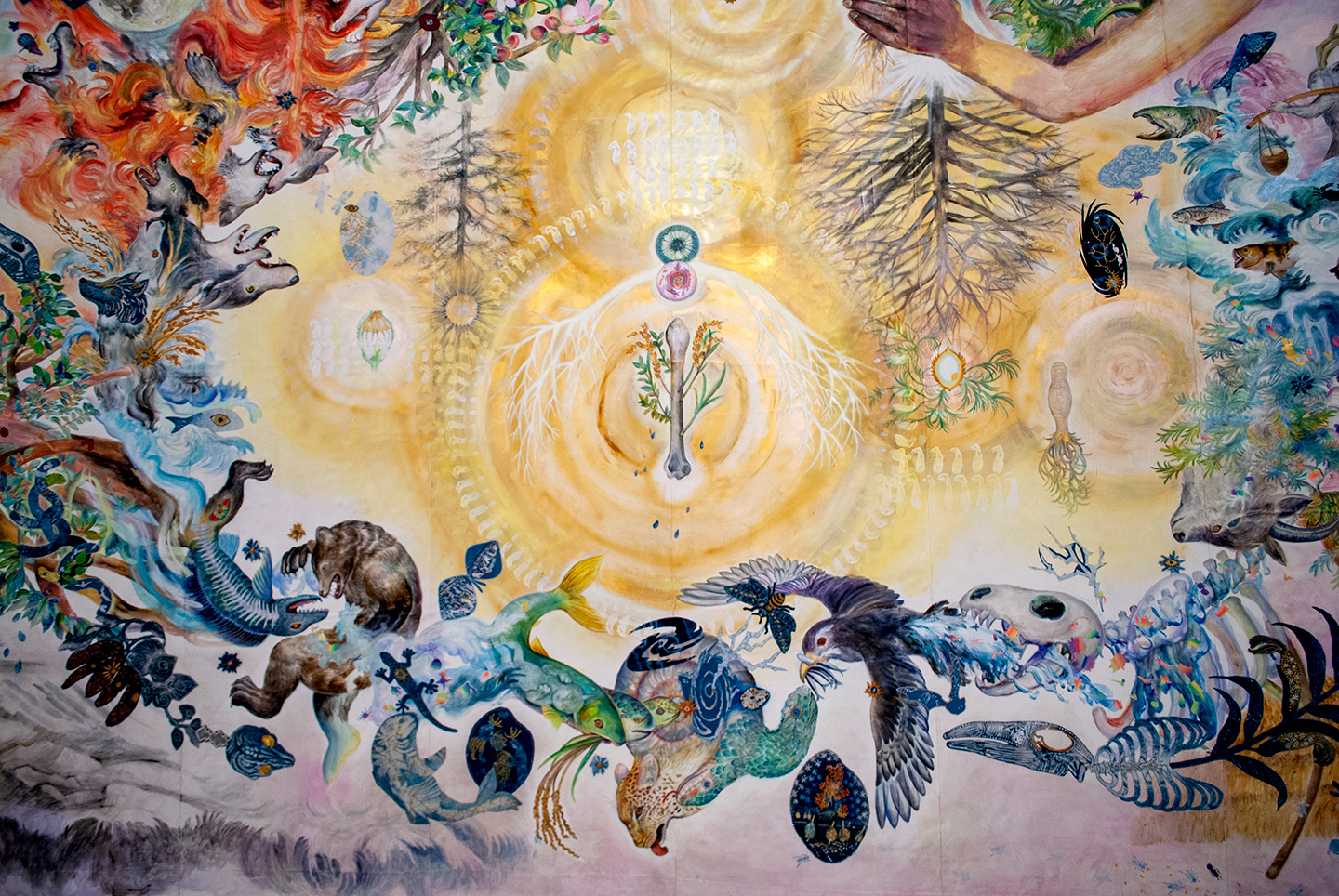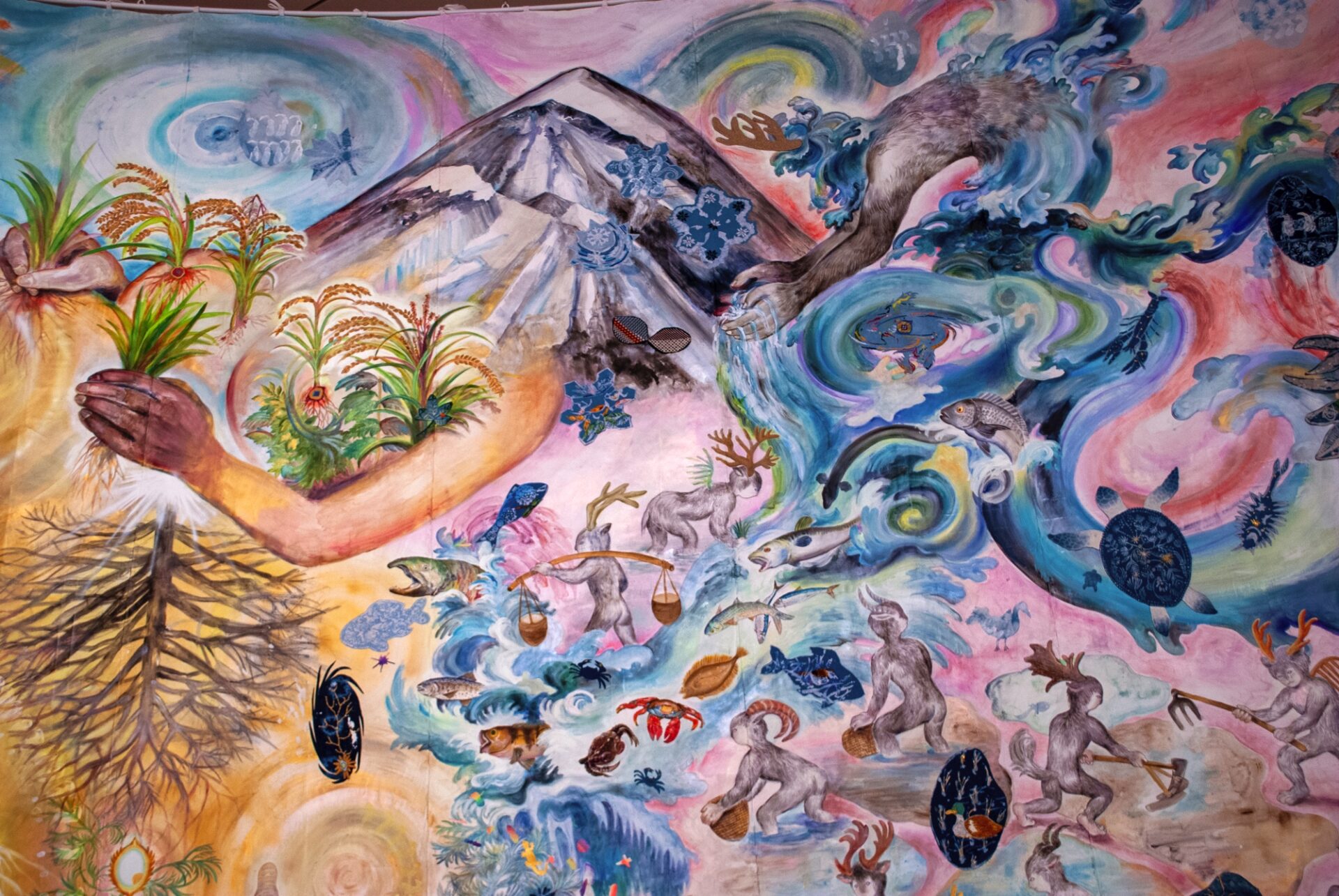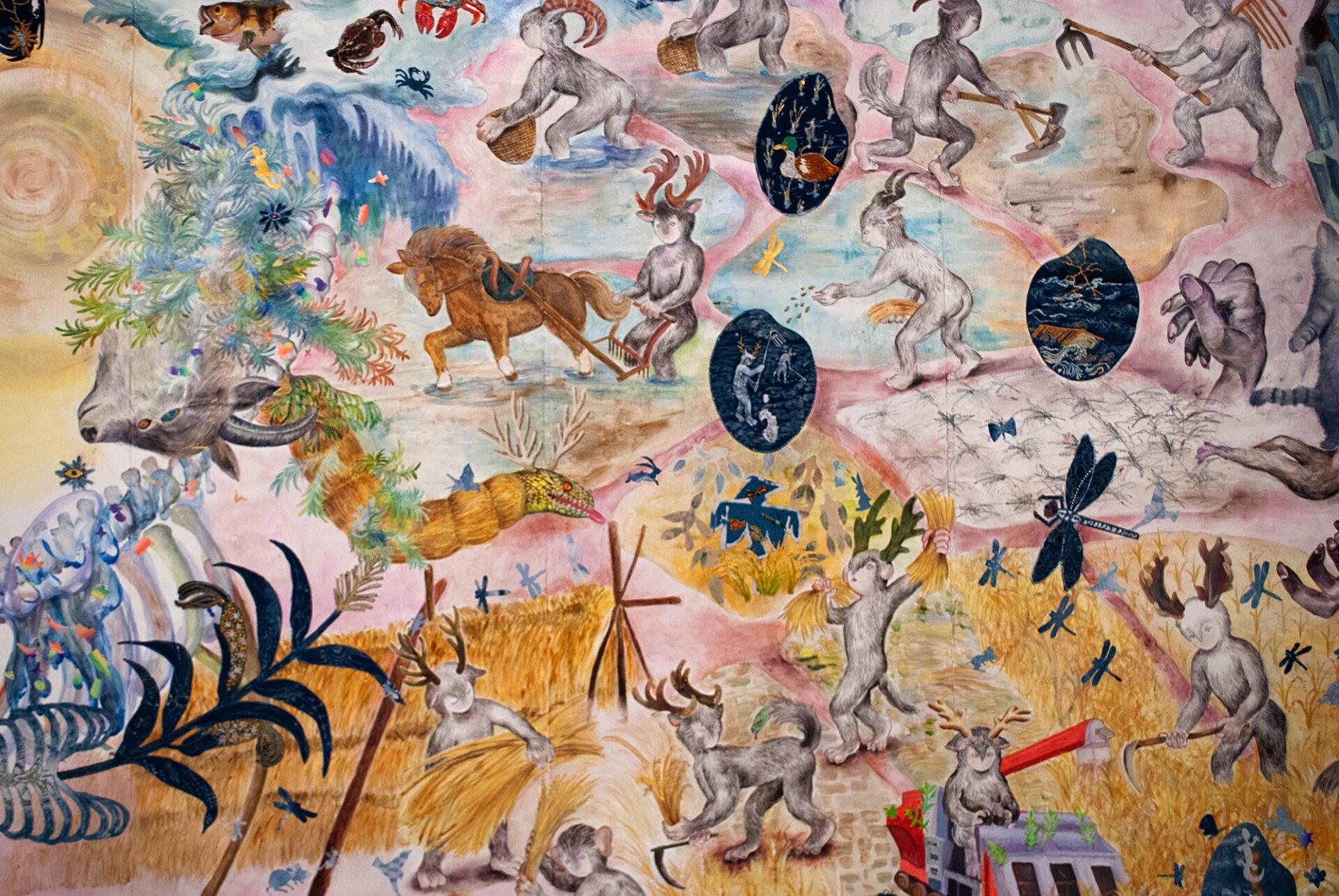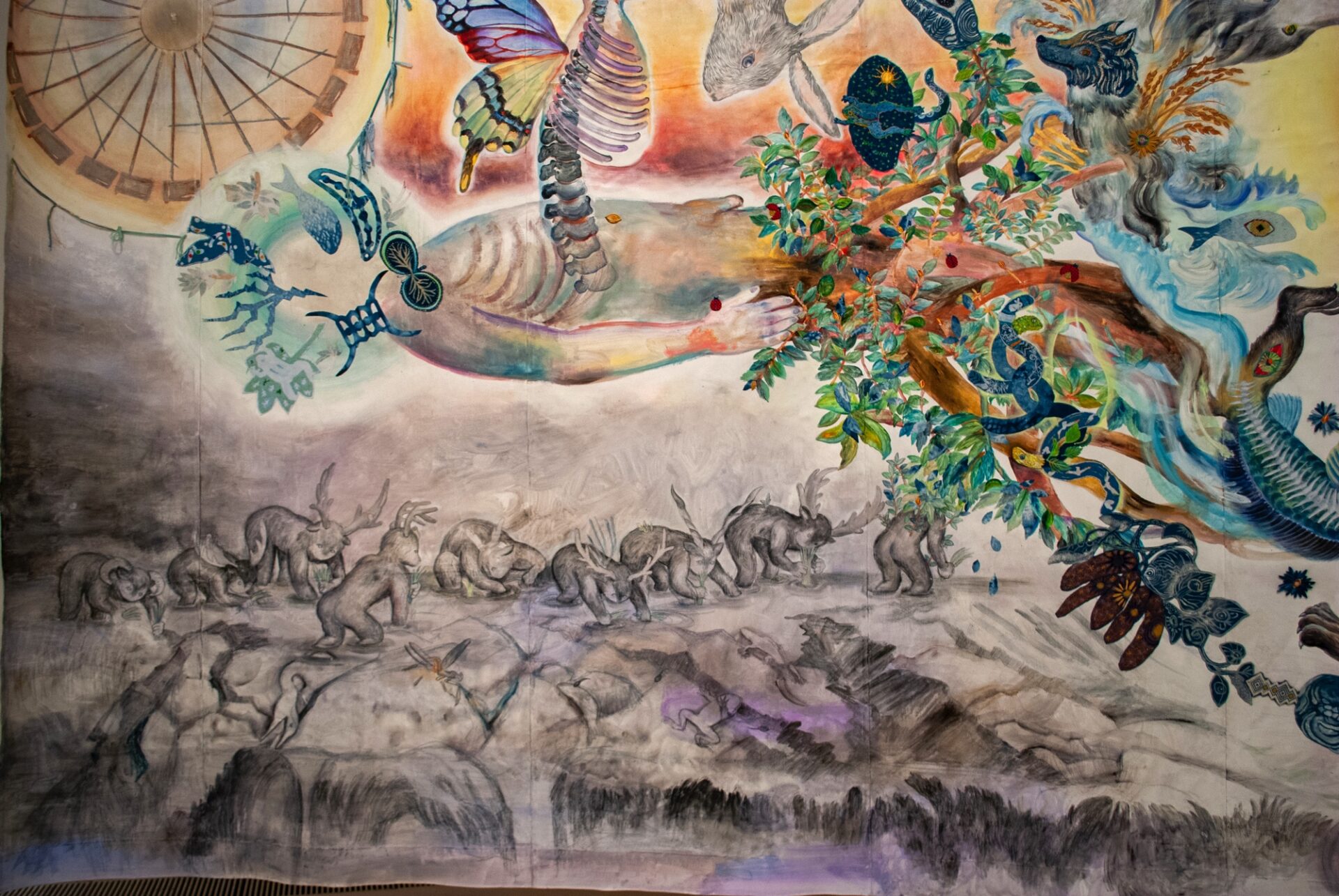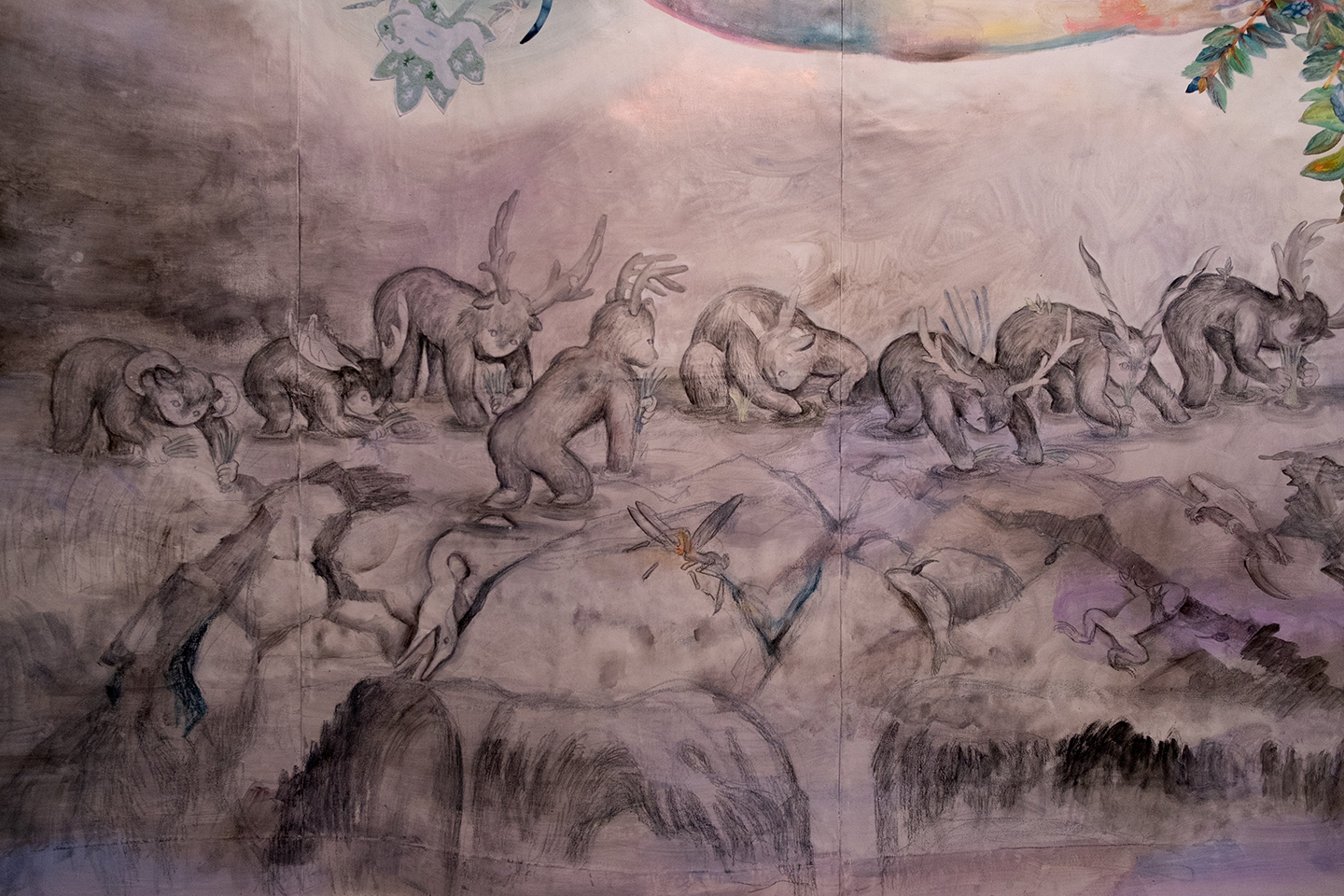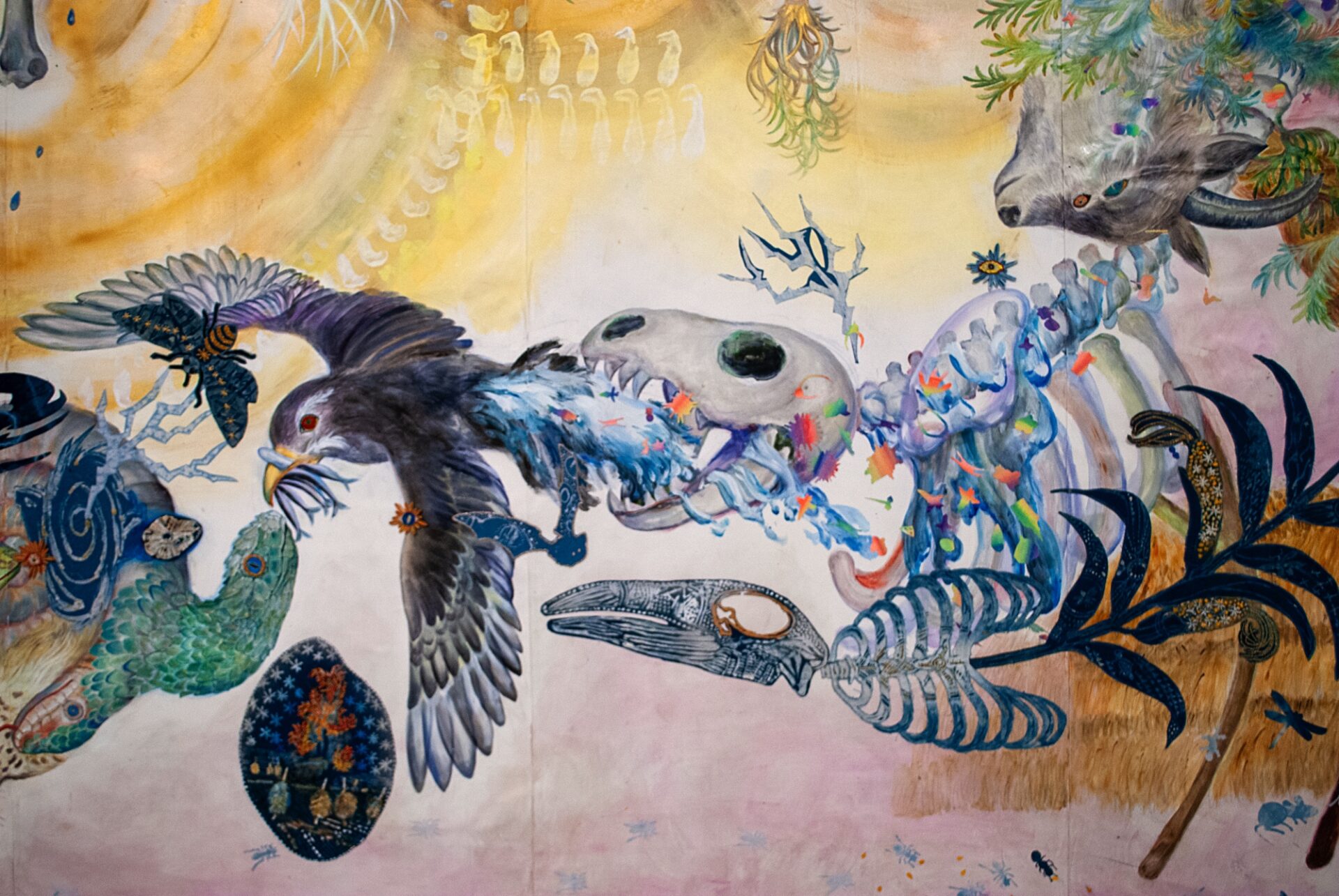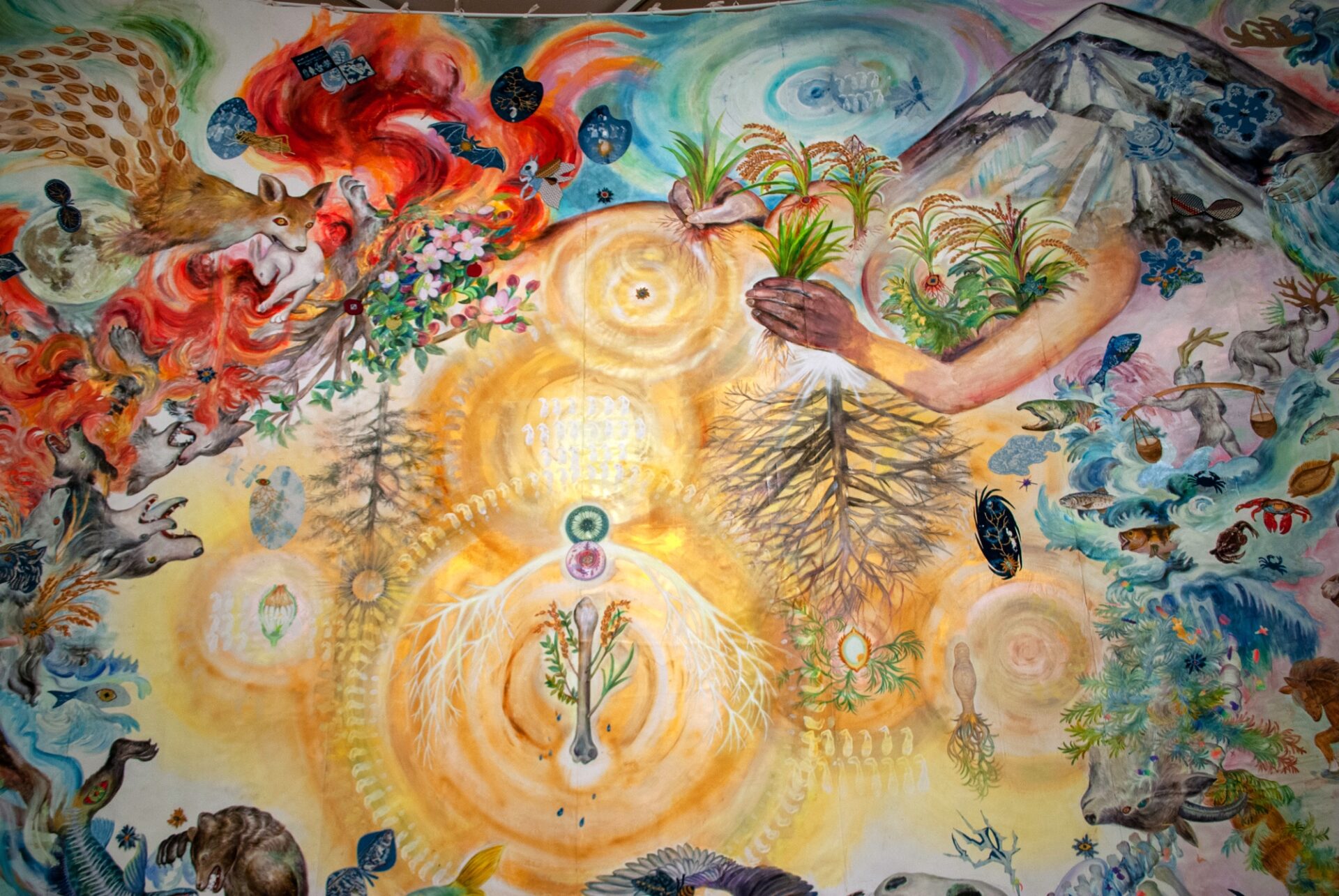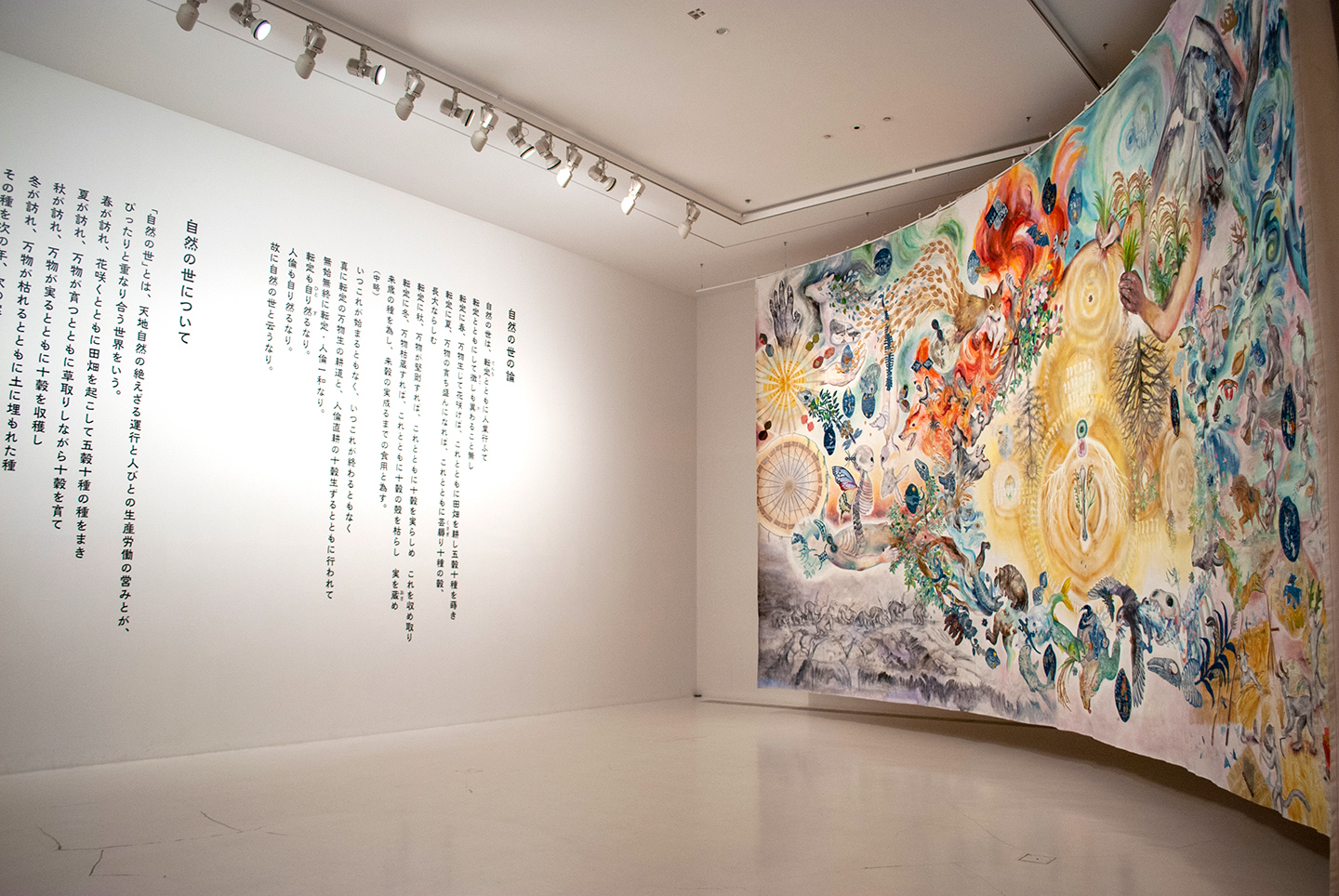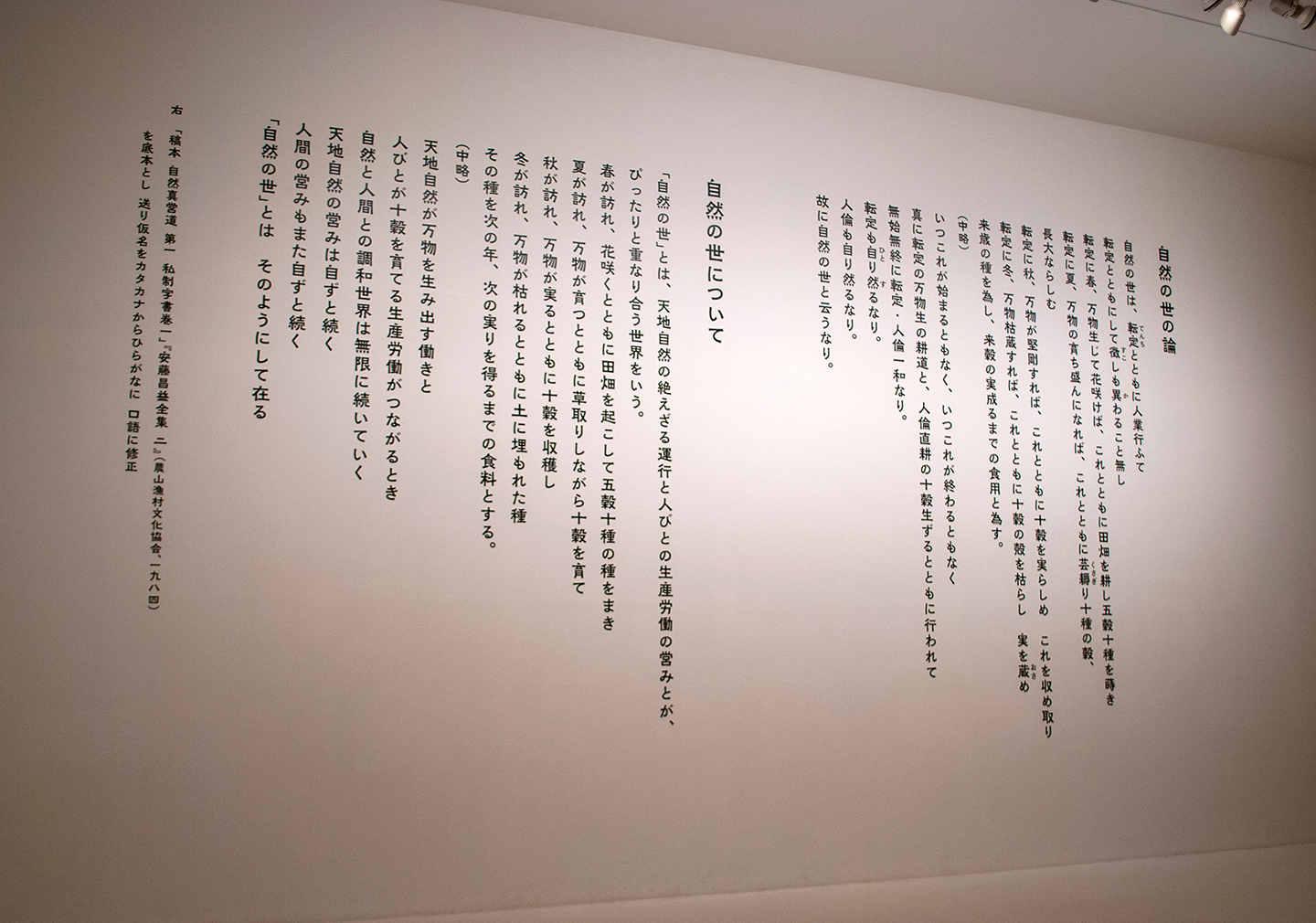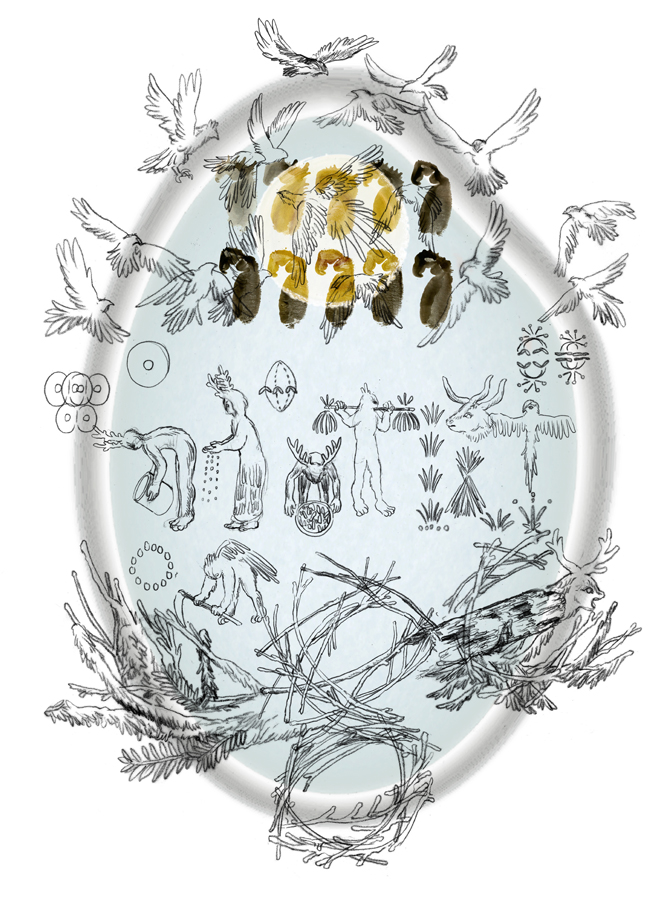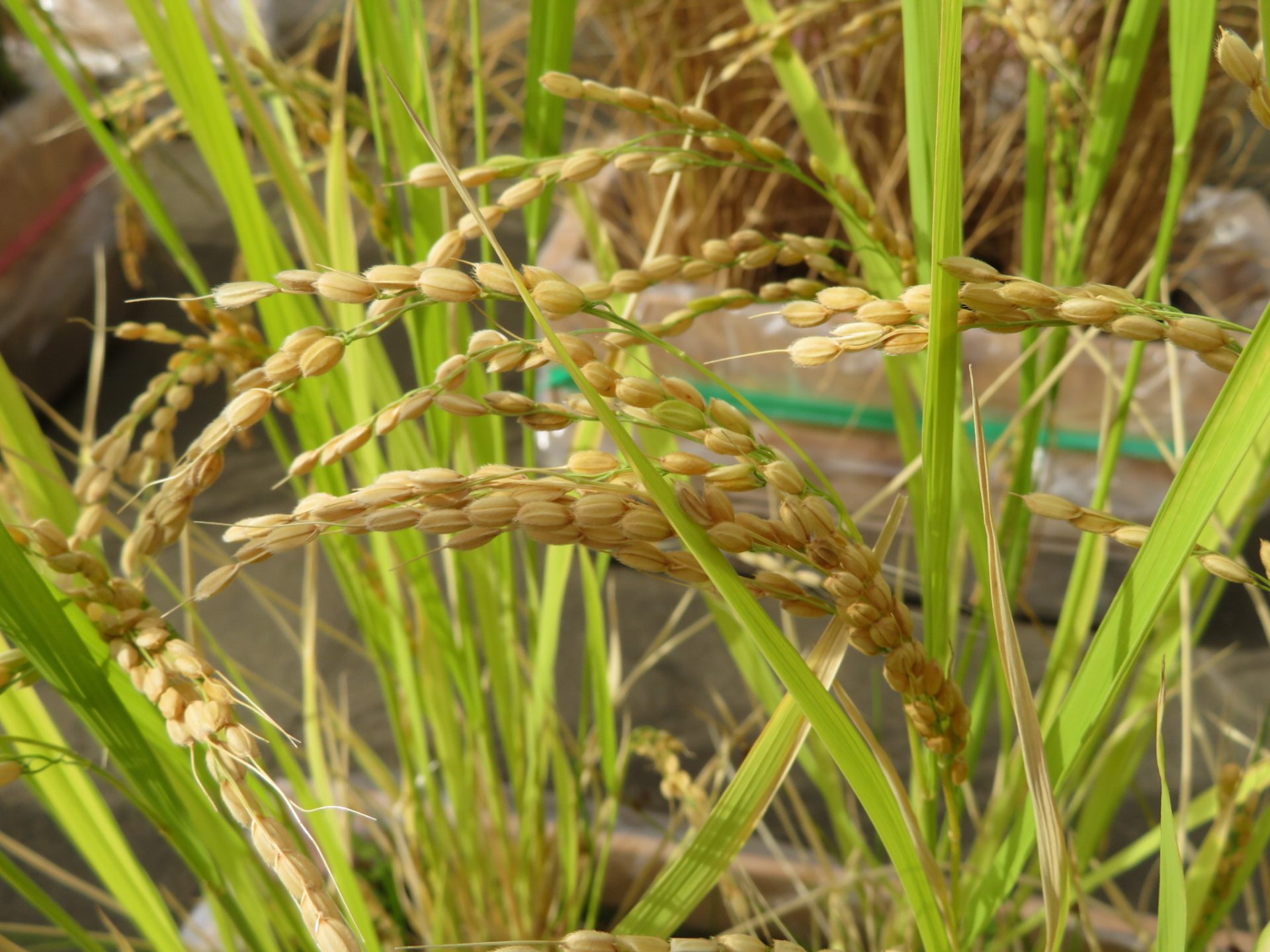Close
← Tomorrow's Harvest
Back
Far beyond the body.
10m painting like a terrain
Photo by Kanako Kakimoto
– Plow and root upon the earth. Make like pray. –
We, the Agros Art Project and the project participants, learned the agricultural culture, and basing on the harvest obtained through the rice cultivation experience at the museum, made 10 m paintings “Harvest of Tomorrow”.
While studying through the activities of the past two years, I wrote a report on 10 m paintings created by the community.
Report.01

Relationship between soil, microorganisms and museum
Since Aomori is a reclaimed land, planting and exchanging fertility with hunger becomes a ceremonial custom and is rooted on every
region in the prefecture.
It seems to be important that this exchange is looked back now. Because we currently live on the land upon such interactions.
Here I explain a bit about this far beyond our body scale , topographical 10 m paintings which was made by the Agross project community.

First of all, the main theme of this picture is rice, a maternal womb, and is eat- eaten circle.

In the center of this picture, rice and cross sections of cells line up, and rice grows from the bones of the arms, rice is planted in bone itself.
In the upper right there is a “mountain woman” and she grows rice within her womb. The richness of rice is brought about from her nipples and body.
Next to her there is a “river man”, and ice melts from the iceberg of the “mountain woman”, and is poured into the body of “river man”.
In the river fish live, and “half beasts” eat them and also use the water for drinking or farming to live.


In the rice field, drawn soil cultivation, planting, fertility, disaster, hunger, prayer, harvest, celebration, and through the half-beasts we can see the history that human brought in contact with the land.

When you move your eyes to the left side of the screen, the body of a person (child) is lying.
On his head those things such as plankton, thunder, butterfly, leaves, birds and fish gather, the lower half of the body is connected to the circle, which controls the center of the screen. This circle is made by eat- eaten repeats, and the creatures exchange parts of each other’s body, and the seeds or embryo of other creatures are lodged in their bodies.



In the upper left corner of the circle the wolves are burning, crying with the flames. We burned peat soil at the beginning of this project and gave a black smoke, a signal fire called Sarkque.
Currently peat is not used for fuel in general. But I drew imagining Japanese wolves were once hunted as a harmful beast and extinct as a species, and recalling their howling.
At the bottom left of the screen this time I drew a barren land. It was the last part I drew in this work and is a very important part.

When I watch the earthquake fault map of the world, I am made to notice the Japanese area is full of bright red marks. We live the Japan.
Islands where the four of dozen or so plates on earth bumped in one place. Looking back at the past, there were earthquakes, there were big tsunamis, and they washed the land number of times. And once fields were immersed in the tide, cultivation of crops or
vegetables cannot be done without blood bleeding endeavor. Although now we use seedling planting machines, when doing rice planting by human hands, people bend their bodies to the ground, as if they bow to the land, and plant rice one by one.

As for me, my grandfather who dedicated his life to agriculture, looking at his bent waist along the ground, same to the human history of agriculture, I cannot but standing with my head hanging, thinking about the hard labor, heaviness and preciousness of human life history.
It is said that the movements of Japanese dance’s forms are taken in from the figure of agricultural work, and from the movings the field grass winds up in the wind.
Drawing a picture is, I think, connected to the action that mankind sprayed a hand’s shape on the cave with a pigment or carved animals and half-beasts in the cavern surface.


For the past two years‘s experiences I started the process from planting rice to harvesting , I drew in this screen, as if walking and
dancing in out of sense, and finally the spiritual and material crop was developed into this screen as blood and meat.
And the characteristic point of this painting is cooperative screen making by members.
Through the production of rice, we shared the findings noticed from unraveling the history, and developed then into shapes, materials and
stories.
The blue shape seen everywhere on the screen are cloths dyed with Aomori indigo― they are shaped such as rice, butterflies, galaxy,
snow, dragonfly, daphnia, whale, sweet potatoes, corn, ants, fish, lizards, rainwater and so on.
And among them various patterns are engraved by indigo dyeing and embroidery. such as Misonoya pilgrimage, frogs bouncing over rice
fields, straw baking, water wheels, tsunami strikes, etc.

Butterflies of indigo dyed- stiching praying mountain( Oyama sankei)


These parts are made by the participants’ hands taking spells. Someone draws in indigo the image that another imagined, someone cuts
out, another embroidered, and furthermore another embroidered upon them. How many hands are taking part in this one indigo? The
precious parts that are co-made or made by cooperated work are scattered all over the screen and enhances the whole.

In the middle of the screen and in some of the indigo parts, there is a hand print of the hand side marked with rice paint, the shape of the
side surface of the hand held by the participant becomes sound, rhythm, and is singing out on this large screen.

The title of this picture is stated “harvest of tomorrow”.
I hope this painting made up by our hands that crafted the soil and breed crops, and made up just like breeding crops, will become a
harvest and a wisdom for consciousness to walk towards the future, towards tomorrow.
Report.02

I express my heartfelt gratitude to everyone who supported Agros Art Project!



A place to see paintings made by Saito. It is made of straw, rice husk, agricultural vinyl.
It is entitled “Ars”.


Cooperative printmaking by Aomori elementary school students. History is engraved.
In the story of “When the black soil catches up”, the appearance of the forest being shaved off from the point of view of animals is narrated.


The spindle of this two years.
I upload pictures of screen here!
But since the embroidery in work is fairly detailed and the double sights of whole and detail are very
interesting, if you are interested, I’d love to see the real thing *
The exhibition presentation will be held until 3rd March.
The exhibition including this “harvest of tomorrow” has the plan to be held again this autumn.

root and seed

Bone miner drink plankton and corn creatures


Thank you very much, NHK, Too nippo, Asahi , Mutu sinpou interviewed!




Sound of the soil

Tomorrow's Harvest
2017 - 2018, Project
Canvas, acrylic, pigment made by rice , indigo, cotton fabric, thread
size 4650×9860cm
In Aomori Museum of Art.
Maki Ohkojima with Agros Art Project
→ Far beyond the body.10m painting like a terrain
